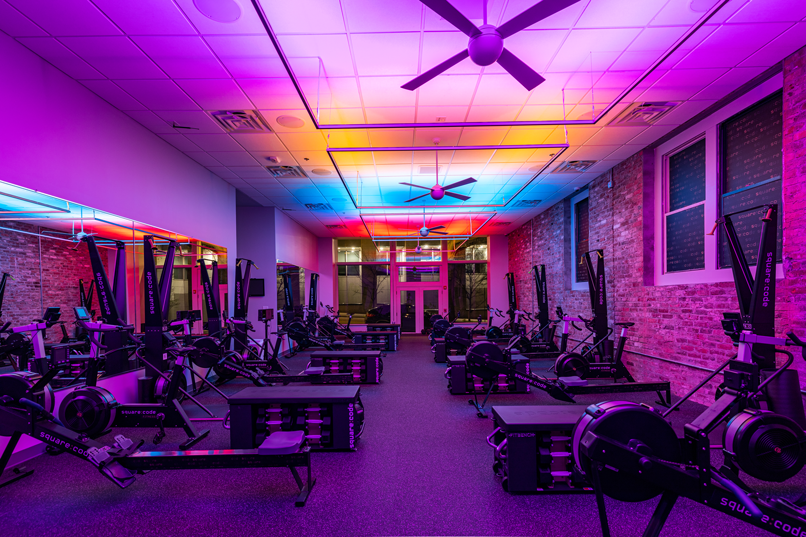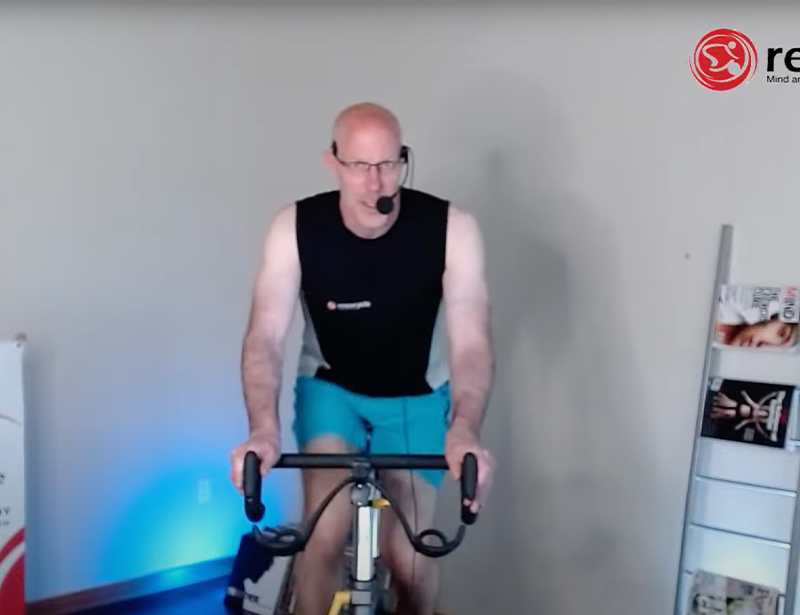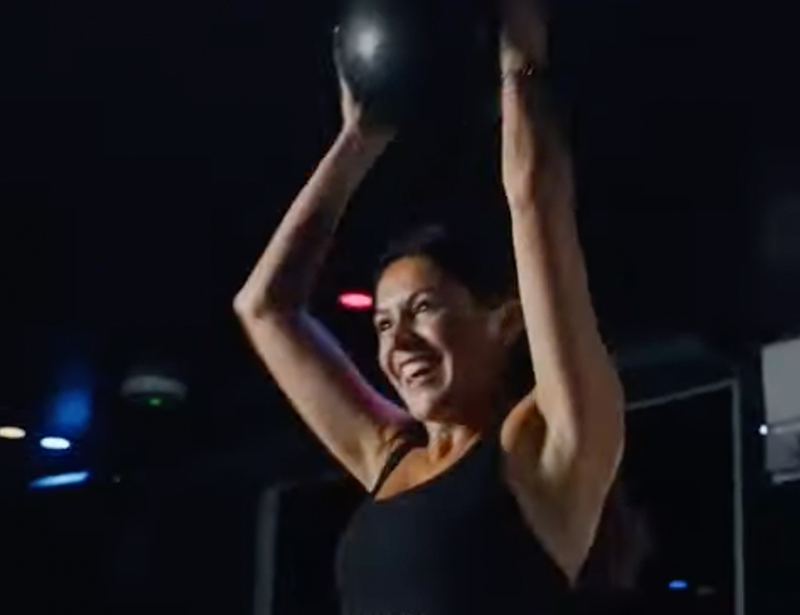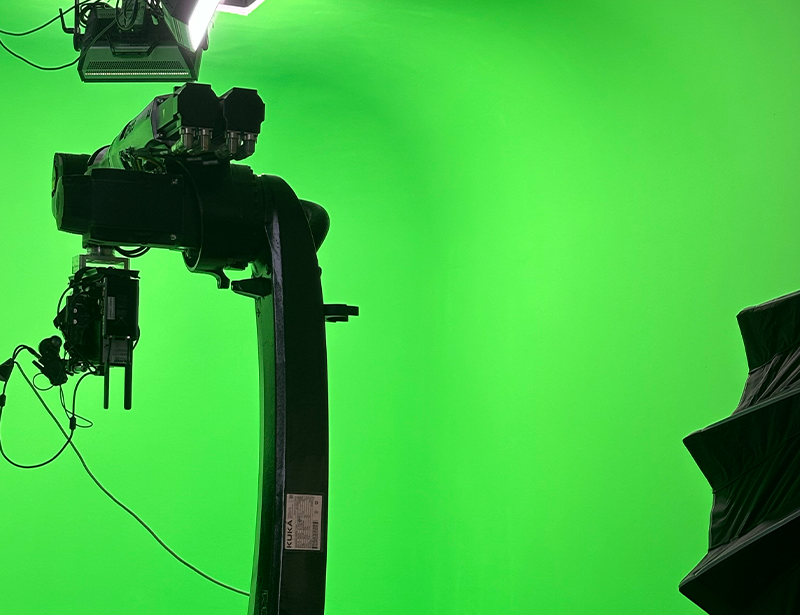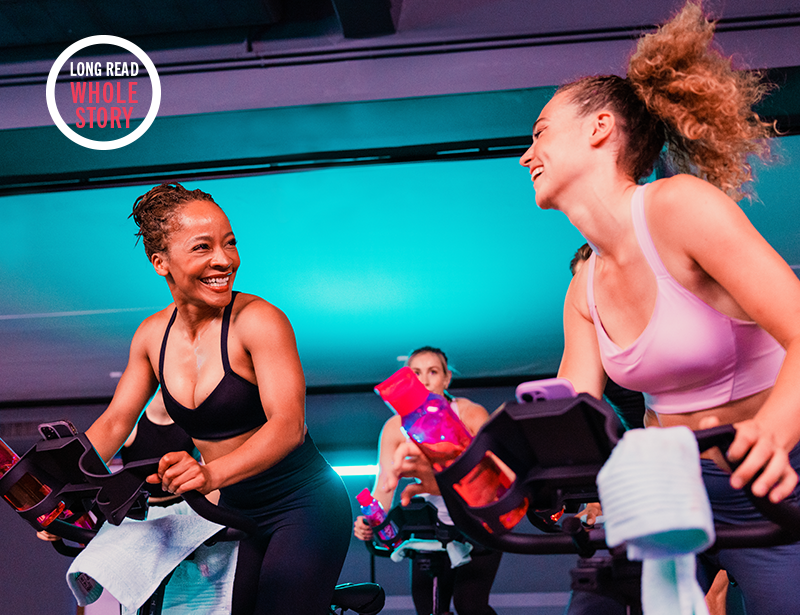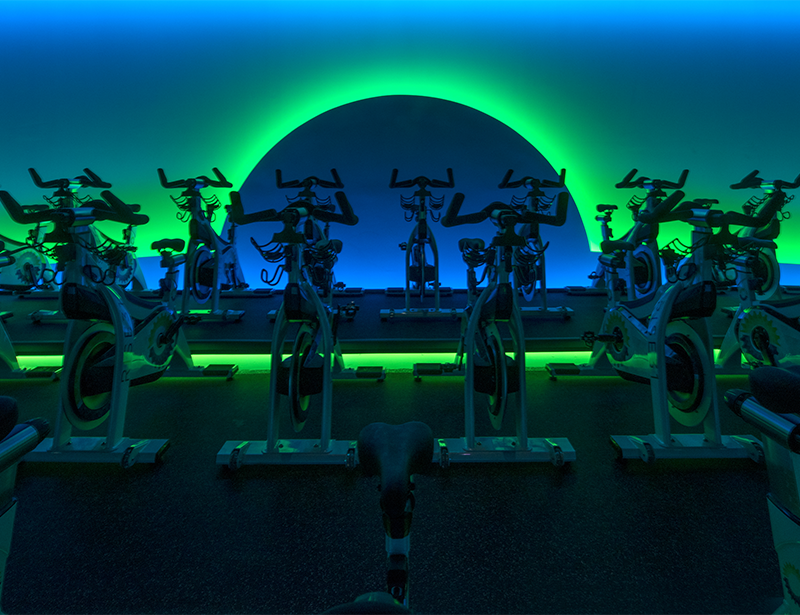Author: Pernille
Promoting Happiness
“Gyms remain hesitant to embrace this huge, happy opportunity to expand their reach. What are we waiting for?”
For as long as I can remember, the fitness sector has pushed a ‘no pain, no gain’ message of physical transformation; indoor cycling has arguably been among the sector’s worst culprits.
Could it be that mindsets are finally changing? From the conversations we’ve had for this edition of RIDE HIGH, it would seem so – among consumers at least.
On page 36, boutique operator and former IHRSA chair Carrie Kepple says the post-pandemic consumer is pushing back against physical perfection, and that it will hurt our sector if we continue to sell it.
“This isn’t about making workouts easy,” she explains. “It’s about helping people find instant joy and reward in the effort itself.”
There’s a similar theme in ‘Happy Hour’ (page 40), where leading experts discuss the almost immediate mental and emotional benefits of exercise. Their suggestion: that happiness and improved energy – how you feel – should be the focus of our marketing.
If this all sounds rather familiar, it should. This isn’t new news.
It was in 2014 that London-based Psycle launched to the world, its brand defined by the mental and spiritual connotations of ‘psy’. (For the latest news from Psycle, see page 6.)
Journalist and RIDE HIGH contributor Kate Cracknell tells me she first wrote about this topic in that same year. In one of her 2014 thought leadership pieces – entitled The feelgood factor – she commented: “Quite simply, exercise makes you feel good: happier, less stressed, more alive, more energetic. This is a very compelling, instant benefit that gyms and studios should absolutely be harnessing in their marketing.”
In another, she noted: “Focusing on the immediacy of how people feel straight after their workout will keep them coming back for more.”
And there’s data to prove it, she adds: “It was over 10 years ago that research by Michelle Segar, published in the International Journal of Behavioral Nutrition and Physical Activity, showed how those motivated by quality of daily life – lower stress, better sleep, increased vitality and so on – exercised 34 per cent more than people with weight- or appearance-based goals.”
Yet all these years on, gyms remain hesitant to embrace this huge, happy opportunity to expand their reach with an inclusive, encouraging message.
My question: What are we waiting for? I hope this edition of RIDE HIGH further fuels the conversation, and I welcome your views.
Focus on the feelgood
To sell any product, you must be constantly tapped in to changes in consumer mindset, evolving your positioning and messaging around emerging needs and desires. That’s basic marketing.
Since the fitness industry was founded, it has sold physical perfection. And maybe, to a point and for a while, that was OK; those who achieved it certainly became hooked for life, even though it remained far too distant a goal to sustainably motivate the majority.
Things are notably different now, as a convergence of important external forces encourage our sector to establish a new ‘why’ in consumers’ minds.
“The post-pandemic consumer is actively seeking things that bring peace, harmony and joy to their lives”
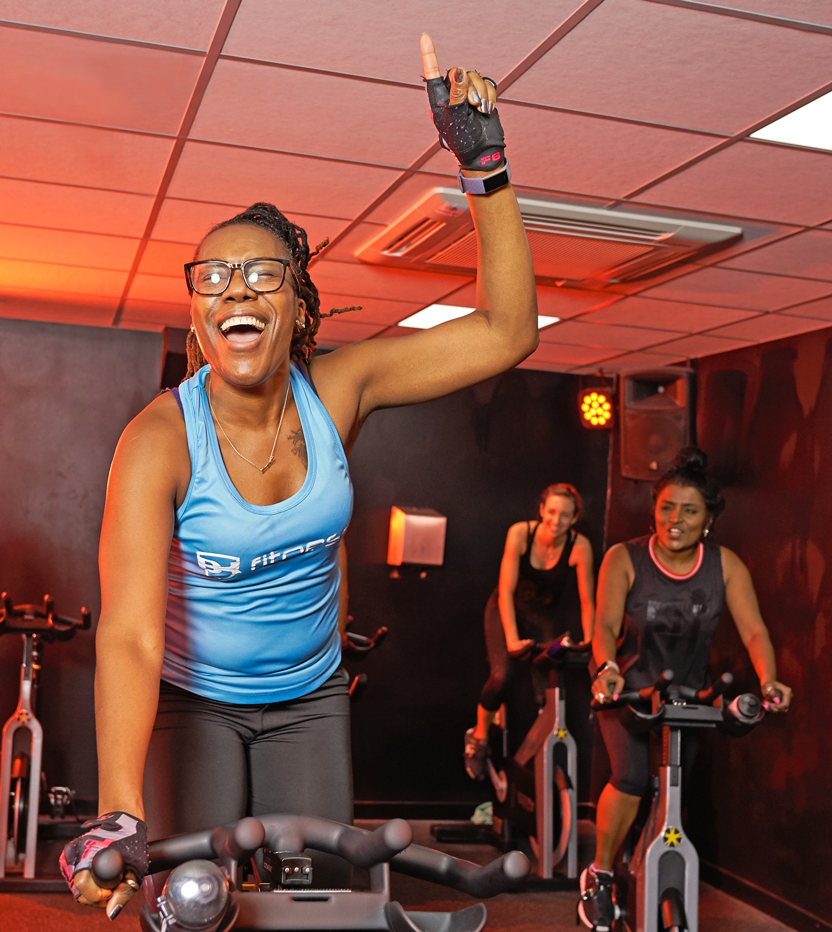
First, across society, we’re seeing a push-back against physical perfection. As consumers become more self-accepting, a movement of diversity, equality and inclusion is forcing big brands to change their approach and adjust their prescriptive and restrictive views of how we should all look; even Victoria’s Secrets models are now diverse in size and body shape.
“Physical perfection is no longer consumers’ goal, and it will hurt our sector if we continue to sell it”
Second, the post-pandemic consumer is actively seeking things that bring peace, harmony and joy to their lives. In gyms and studios around the world, they’re placing as much value on the mental and social dimensions as on physical fitness.
That’s good news for disciplines like indoor cycling, which have long thrived on social as well as physical fitness. Yet the quest for joy means we have to deliver it differently now; the days of being beasted in an indoor cycling class are gone.
Selling emotions
So, how do we evolve? While I was IHRSA chair, we commissioned research from behavioural science specialist ClearView, looking to understand how, post-pandemic, we might reactivate the 20 per cent who were previously gym members. We received an important lesson in human behaviour, and specifically in a thing called EROI: Emotional Return on Investment.
All day, every day, EROI shapes human decisions. If we perceive the reward of any action to be greater than the effort, we’ll probably do it. If we perceive the effort to be greater than the reward, we probably won’t. We naturally seek out instant gratification in everything we do: effort-reward, effort-reward, effort-reward.
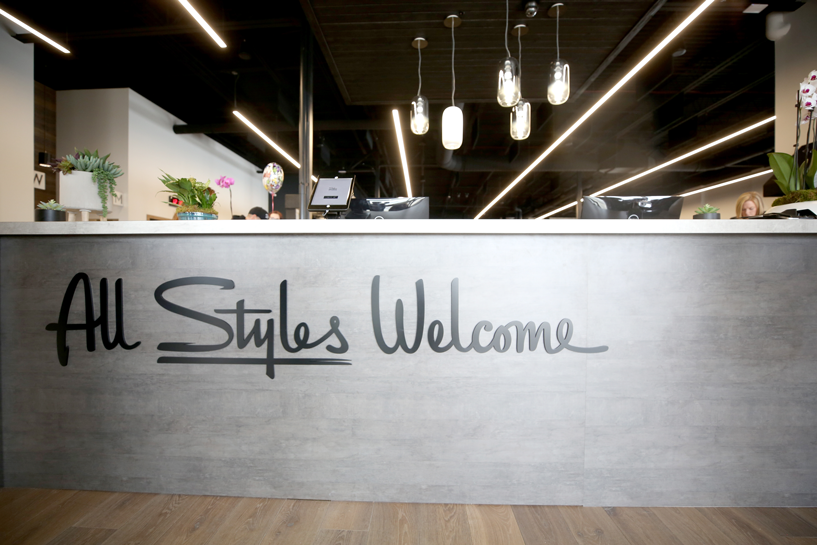
And this is the issue with selling physical results: it’s perceived as effort-effort-effort-effort and maybe, eventually, a small reward of losing a pound or two. It ensures fitness is perceived as a chore people must do to somehow ‘fix’ themselves.
The alternative presented by ClearView is simple: sell the instant, feelgood reward of fitness. This plays to the strengths of group exercise in particular – the stress-busting, endorphin-rushing, energised positivity you feel from working out together in class. Some operators have already communicated it. Now we all must.
“We must learn to attach people not to physical results, but to the enjoyment of happy energy and the feeling of movement”
We must learn to attach people not to physical results but to the instant satisfaction of completing a workout, the enjoyment of happy energy, the feeling of movement. We must make our experiences an escape from punishing daily life, not punishments in their own right.
This isn’t about making workouts easy. It’s about helping people find instant joy and reward in the effort itself.
And it doesn’t just apply to ‘party on a bike’ boutiques. It applies to us all. We must create a new culture where every workout comes with a high: coaching styles less clinically focused on technique, instead emphasising sensations, emotions and feelings; individual effort celebrated – ‘your effort today is enough’; instructors’ language and tone infused with energy, happiness and belonging.
Quite simply, this is the future of fitness. Physical perfection is no longer consumers’ goal, and it will hurt our sector if we continue to sell it.
Uffe A Olesen
What originally drew you to BODY BIKE?
Nowadays I’m hugely passionate about indoor cycling, but 20 years ago I came at things from a design perspective. I used to work in the furniture industry, and prior to that had been involved in the design of other products too, from textiles to fashion accessories and glasses. Design has always been my first love and forte.
“We believe even the best can always be better. We’re constantly creating, which is what makes my job fun”
At the time, the model was the BODY BIKE Classic. I was fascinated by its quality, but believed a few design changes could make it even better. That included fully enclosing the bike to protect all vital parts from sweat, making it even more long-lasting – an attribute BODY BIKE has always been famous for.
Since then, we’ve continued to push the design boundaries in pursuit of the perfect indoor bike. We believe even the best can always be better – an ethos that’s kept me enthused and engaged over my two decades at BODY BIKE. We’re constantly creating, which is what makes my job fun.
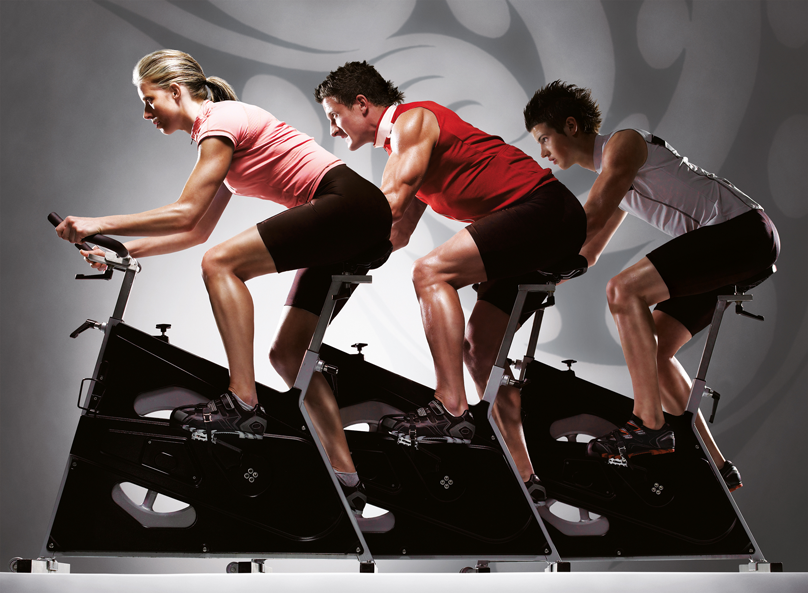
What’s driven your product evolution?
We’ve always given ourselves permission to innovate and experiment at BODY BIKE, which is ultimately what drives our product evolution.
But in terms of key themes over the years, I’d have to spotlight technology and sustainability – both things we couldn’t have predicted 20 years ago.
Back then, cycling classes were screen-free. Now there’s an interest in performance data, so in 2016 we launched the BODY BIKE app; we’ve never believed consoles to be the best approach, as we believe riders should own their own data.
“We’re on a mission to make all our models sustainable, using recycled materials and reducing each bike’s CO2 footprint.”
Meanwhile, sustainability has become a mantra at BODY BIKE. Our sustainable BODY BIKE Smart+ siblings – OceanIX and Forest Green – blazed such a strong trail that we’re now on a mission to make all our models sustainable, using recycled materials in their manufacture and working to further reduce each bike’s already-low CO2 footprint.
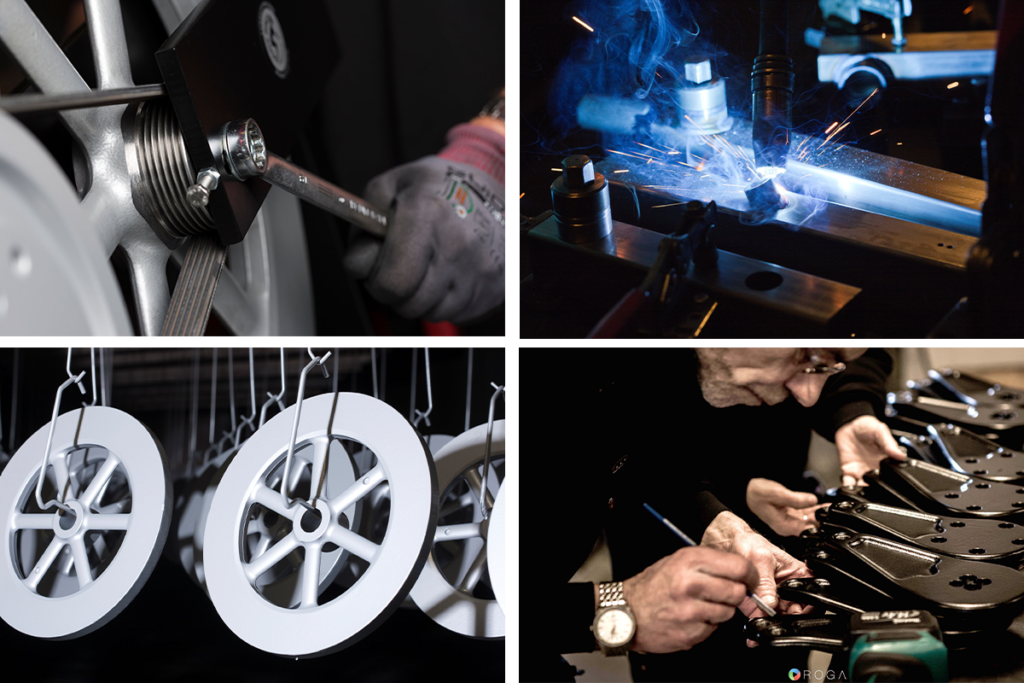
And now, in 2024, we’re about to unveil our latest evolution: the new BODY BIKE Phantom, which launches at FIBO next month. With its magnetic braking system, Quattro resistance knob – four clicks per turn for precise gear changes – and inbuilt usage tracking so clubs can rotate bikes for even greater longevity, this fantastic new model continues to move the dial for riders and operators alike.
Has the company changed much?
The ethos and philosophy at BODY BIKE are essentially unchanged from 27 years ago. Each bike is still lovingly hand-crafted in Denmark, with quality, creativity and passion at the heart of what we do. The team is also only 20 per cent larger than it was at the beginning, with great continuity over the years. BODY BIKE was founded in 1997 by Jørgen ‘Peiter’ Petersen, who remained a mentor and brand enthusiast until he passed away in 2017. It is now led by his son Kim Hessellund, who joined the business in 1999. There’s a real sense of family, with several team members with us from the very beginning.

But we have grown and evolved, of course. We now wholly own a 12,000sq m factory in the north of Denmark, including on-site metalworks, and you’ll find our bikes in all corners of the world. In fact, although we’re proudly Danish and have a strong local fan base, 80 per cent of our production is now exported. We also launched BODY BIKE APAC last year: our first investment in establishing our company overseas rather than using local distributors.
Where else does your creativity shine?
We’ve become magazine publishers, launching RIDE HIGH in 2017 – a brand-neutral publication that champions and celebrates indoor cycling around the world. Anyone can promote their own products. I really wanted to bring something to the table that would inspire our whole sector on to even greater things. I’m hugely proud of what RIDE HIGH has become –the fascinating people we’ve interviewed and the great insights and perspectives we’ve shared.
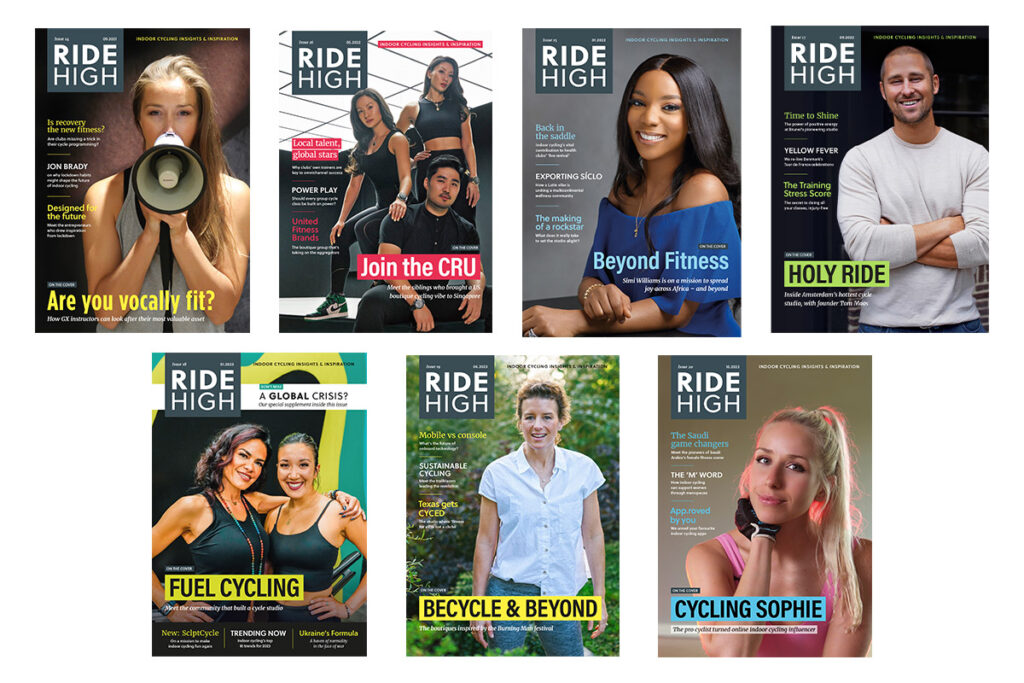
“I wanted to bring something to the table that would inspire our whole sector on to even greater things. I’m hugely proud of RIDE HIGH.”
We have a lot of fun with our FIBO stands too: from spaceships to forests, we create out-of-the-ordinary, crowd-drawing spaces.
And in 2021, we launched BBCARGO: a sister brand to BODY BIKE. This best-in-class eCargo bike puts all our sustainability learnings and bike-building expertise to good use. It just felt like the right thing to do given all the environmental pressures on the world around us.
How has indoor cycling changed?
The arrival of the boutiques was a big one. These beautiful spaces, with their rockstar instructors and incredible music and light shows, took riders into another world, while ‘dancing on a bike’ programming brought a new element of fun to indoor cycling. All of this has driven a dramatic change in consumer expectations, forcing other operators to up their game.
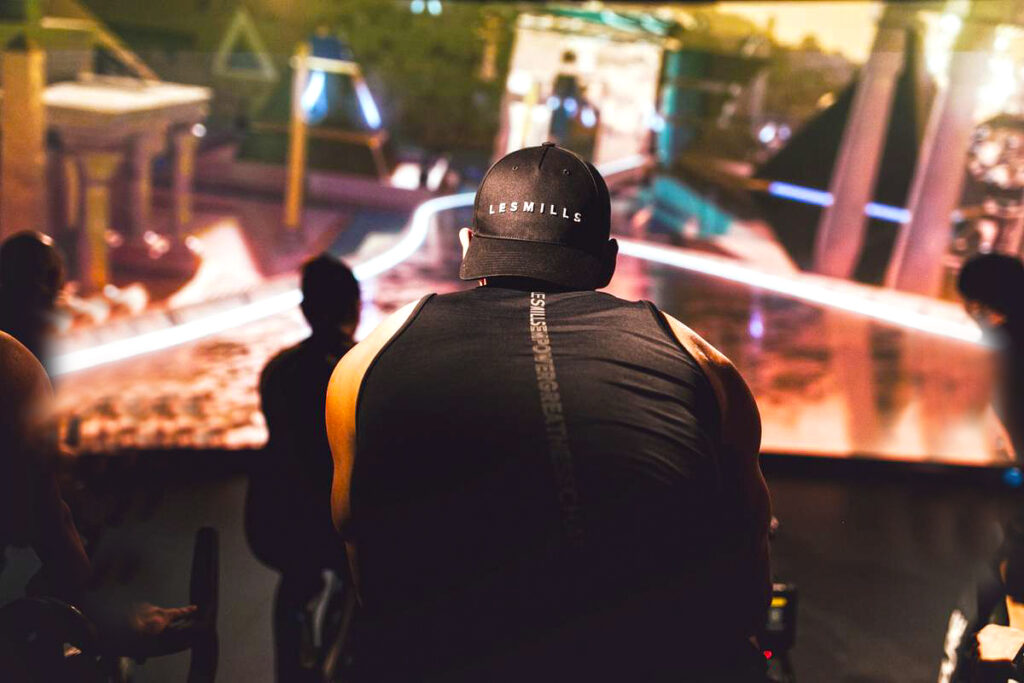
We’ve also seen the diversification of programming generally. From the old days of fitness cycling to generic music, we now have everything from on-the-beat choreography to performance classes and everything in between. There’s something for everyone.
I’ve mentioned technology already, but its impact goes far beyond data. From spectacular AV to wraparound screens, the rise of immersive experiences has been transformational for our sector. I remember the first time I tried Les Mills’ THE TRIP. I had goosebumps.
It was a privilege to supply BODY BIKES for the global roadshow that introduced THE TRIP to the world. In fact, I’d highlight our strong, long-standing relationship with Les Mills as one of the highlights of my time at BODY BIKE.
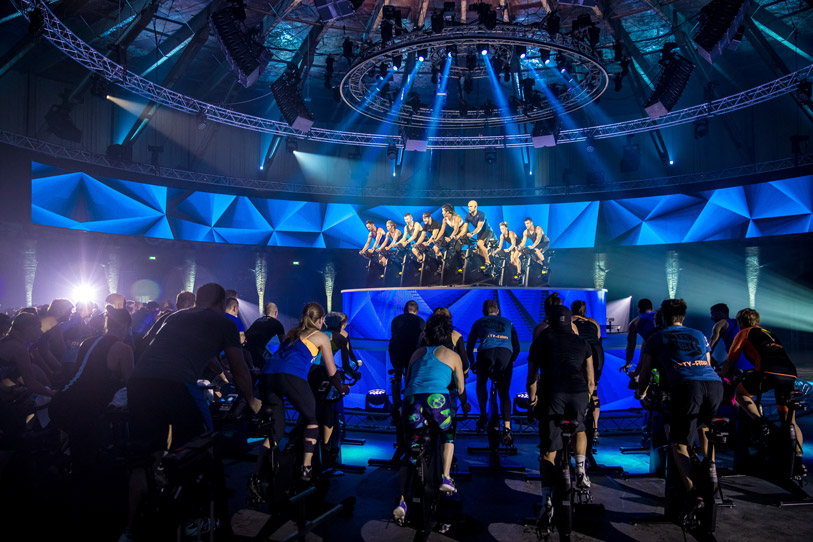
What’s the future of indoor cycling?
Right now, indoor cycling isn’t as hot as it has previously been: reformer pilates is the big trend at the moment. I firmly believe indoor cycling is here to stay, though. It’s arguably unique in the way it caters for all ages and abilities in one class, and it has and will continue to stand the test of time – provided it evolves in line with consumer expectations.
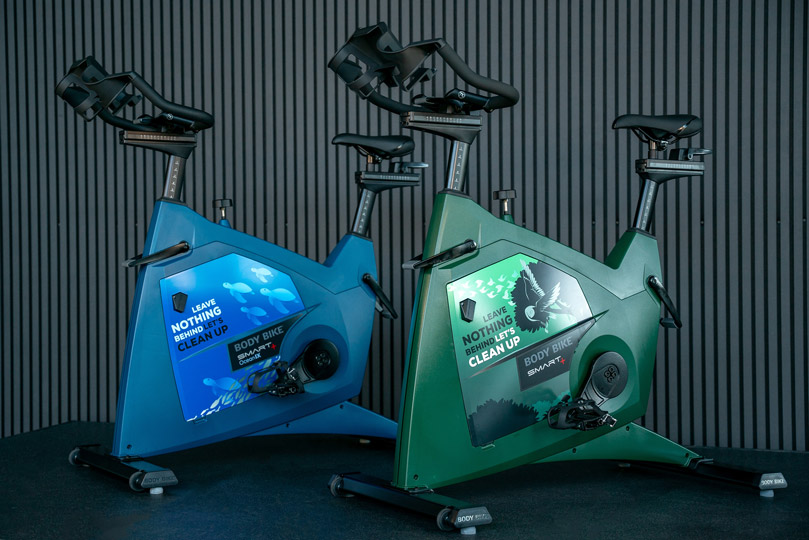
In many cases, operators cutting back on indoor cycling – quoting reduced member interest – are in this position because they haven’t invested in creating experiences. It’s understandable, so I’m not criticising: the last few years have been incredibly hard for everyone. But now, as investment budgets finally return, it’s time to upgrade spaces, equipment, technology and most of all instructors. My simple advice: hire the people who will fill the room.
“In many cases, operators cutting back on indoor cycling – quoting reduced member interest – haven’t invested in creating experiences”
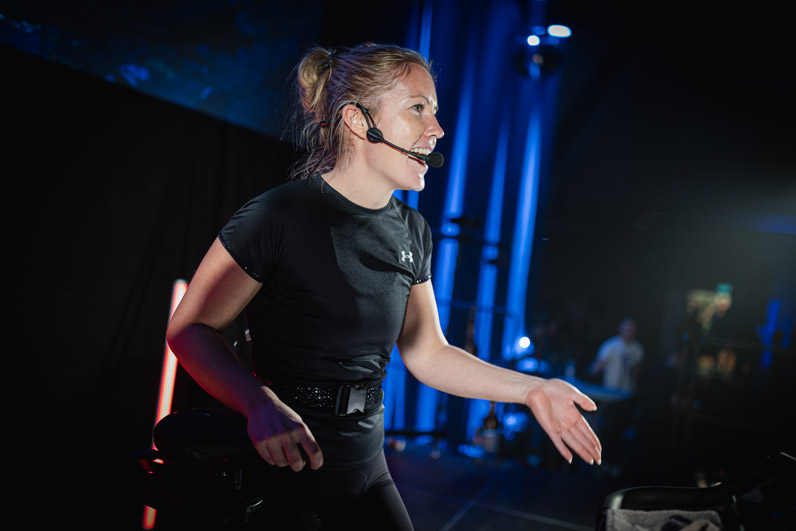
Happy hour
 Meet our experts: Oliver Patrick, Daphne Feller, Daniel Callow and Michael Hosking
Meet our experts: Oliver Patrick, Daphne Feller, Daniel Callow and Michael Hosking
“Physical markers are very often intangible to people,” says Oliver Patrick, co-founder of clinical wellbeing academy FuturePractice. “I can’t get someone out of bed on a cold Wednesday morning to go and increase their VO2 max by 3 per cent, because it doesn’t mean anything to them.
“Neither can I tell them with certainty what the long-term physical outcome of their exercise will be. It’s so intangible, so immeasurable, that it isn’t worth talking about for most people.
“From the first time someone exercises, we can expect tangible increases in energy and happiness”
“As a coach, I have to find something that bothers or interests the individual, then draw a direct line between exercise and their desired outcome. That’s generally going to be something to do with the way they feel, because being mentally suboptimal is the norm in our high-stress world.
“And actually that’s useful, because there’s an immediacy to humans: to get someone hooked on a drug, you need to give them a first fix, and with exercise that first fix will come quicker if you focus on feelings, not fitness goals.”
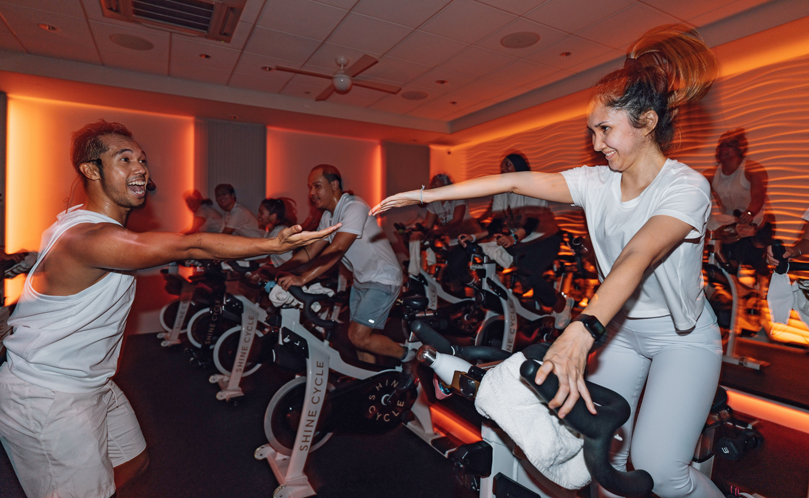
A feelgood boost in just 15 minutes
He adds: “In fact, it can come within 15 minutes of starting a class. From the first time someone exercises, we can expect tangible increases in energy and happiness, decreases in stress, improvements in clarity of thinking and even sleep quality.”
BrainExplainers’ Daphne Feller agrees: “The feelgood hormones dopamine, serotonin and endorphins come within a single workout, with cardiovascular exercise particularly well-known for inducing a significant release of these neurotransmitters.
“Each neurotransmitter has its own job, but all three are associated with enhanced feelings of positivity: runners’ high hormone serotonin plays an important role in regulating mood, emotions and sleep; dopamine triggers our reward system to help us feel pleasurably motivated; and endorphins manage pain, lower stress, improve mood and enhance our sense of wellbeing.
“In a 45-minute indoor cycling class, you can expect your brain to release all three; serotonin takes the longest, normally kicking in after around 30 minutes. Exercise also helps control the stress hormones cortisol and adrenaline.”
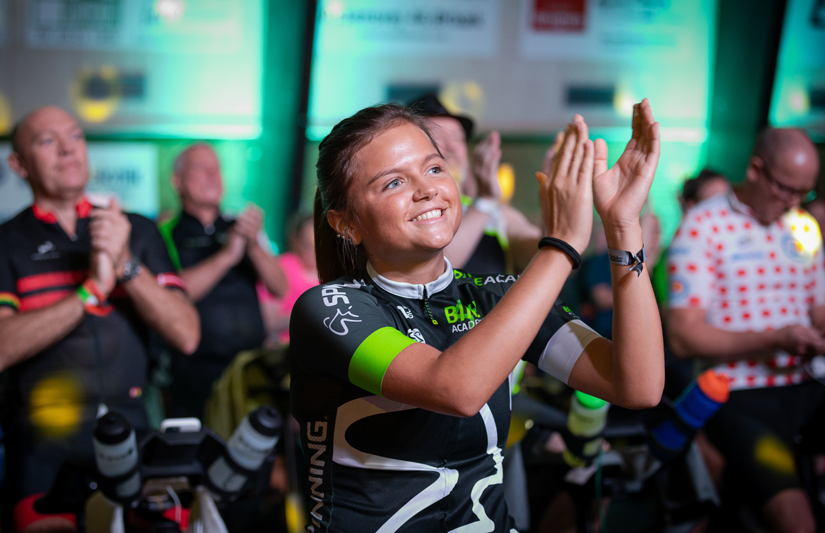
Why group exercise is top for happiness
Patrick continues: “The problem is, we’re generally not great at attaching feelings to what we do. It’s therefore really important that we tell people what we want them to observe when they exercise. Ask them: ‘Have you noticed a decreased tension in your muscles, are you feeling less burdened and a bit more joyful – less keen to honk your horn at someone on the way home?’
“That’s the feeling we want to get them addicted to, so crucially we need them not just to say ‘I feel a bit better today’, but to actively recognise and attach that feeling to their workout: ‘I feel a bit better today because I did the exercise.’
“We need to help them understand the control that exercise gives them over their feelings, so the next time their mood lowers or their shoulders start moving towards their ears, they know how to do something about it.”
“If I help you find more energy, I put you in the best possible position to find happiness… and group exercise helps with multiple forms of energy.”
He adds: “Happiness isn’t always possible, of course. You can’t feel happy if you’re in a state of grief, as an example. However, if I help you find more energy – emotionally, mentally, physically and spiritually – I enable happiness. I put you in the best possible position to find it.
“And group exercise helps with multiple forms of energy, not just physical. We also feel emotionally, spiritually and mentally energised by being in a community where we have a part to play. There’s a lot of interesting scientific work going on at the moment to explain why, but we are undoubtedly hardwired to exist and feel good in the presence of other people.”
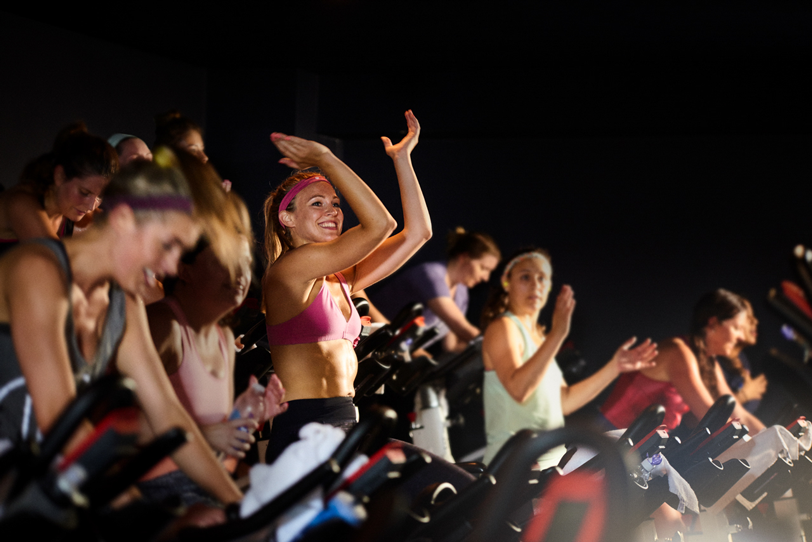
The music in class plays a key role too, says Feller: “Music can evoke strong emotions by stimulating the limbic system – the part of the brain that’s responsible for emotional responses. When activated in a positive way, it can encourage feelings of happiness.
“Music also lowers cortisol levels, especially slow, calming music. It means the final cool-down track of a cycling class is particularly beneficial not just for the body, but also for the brain.”
How exercise helps us deal with stress
Yet the science of exercise and its impact on the brain is still emerging, warns Daniel Callow PhD, postdoctoral research fellow at Johns Hopkins University School of Medicine.
“We don’t actually know what’s changing in the brain at a molecular level when we exercise,” he explains. “BDNF (brain-derived neurotrophic factor) is something people talk about, as we know BDNF is likely important for brain health: the suggestion is that it may be released in the brain when we exercise. However, most of this research has been done in animals.
“In humans, we can only measure BDNF in the blood, not the brain, and it may cross the brain/blood barrier and respond to exercise in an inconsistent manner. At this stage, there’s insufficient evidence to be confident about neurotrophic factor and its direct contribution to exercise-induced brain health.
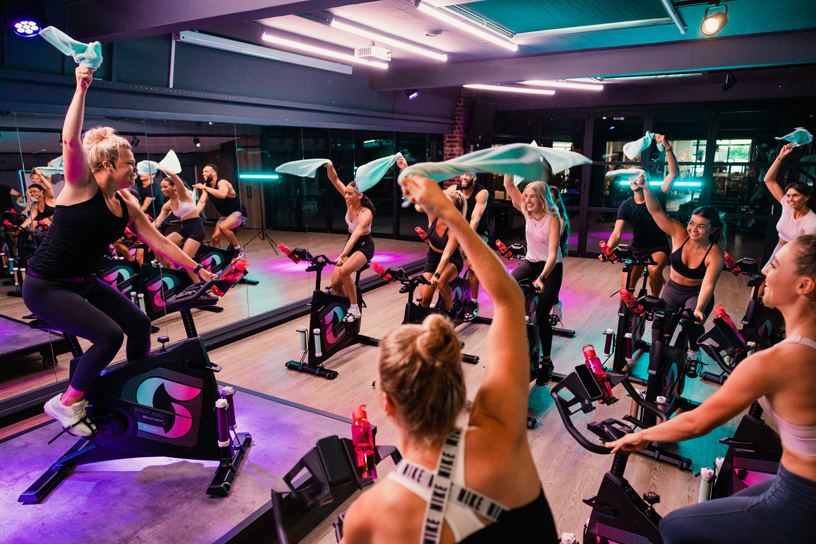
“That isn’t to say we can’t measure any positive impact of exercise on the brain. What we can see and objectively measure – through eye tracking and neuroimaging of brain activity – are changes in networks within the brain, which affect how we respond to external stimuli. The stress response region of the brain, for example, is altered by exercise – mostly in a seemingly beneficial way – which could help explain why exercise helps us deal with depression, anxiety and other mental health issues.
“Scientists have already measured the short-term impact of a single session of activity, but the idea is that over time, a sustained exercise routine could lead to adaptations in the brain that make you more resilient to these stressors.”
How indoor cycling can help treat depression
It is this interest in the causes and treatment of depression that underpins the work of Michael Hosking, Biology PhD, professor and founder of Revocycle Mind and Body Cycling.
Hosking’s fascination with the emerging science around exercise and the brain initially stemmed from his own period of intense depression and PTSD around 15 years ago, which he self-treated using physical activity.
He explains: “I started cycling again and feeling better. I then began to look into the research on exercise and depression/PTSD and a couple of weeks later, told my psychiatrist I was going to stop taking medication. I was feeling so much better. She was shocked by the results I’d achieved and told me it would fundamentally change the way she treated patients with depression.

“When I then discovered Dr John Ratey’s seminal book, SPARK: The Revolutionary New Science of Exercise and the Brain, I contacted Harvard University and spent a week studying under him. I created Revocycle Mind and Body Cycling there and then – an indoor cycling programme where we talk about movement as self-care, stress relief, meditation. We focus on social connection and self-efficacy and we never, ever talk about changing the body or burning calories. The whole programme looks entirely unlike a typical indoor cycling class in its delivery, the way we celebrate, even the way we greet people.
“Why wouldn’t we promote going to the gym to be happy? It’s more inclusive. It says you don’t have to look a certain way to attend the gym.”
“We’ve also now launched Revocycle Mind and Body Education, to teach fitness professionals the science of exercise and the brain. Depression is a huge burden on individuals and society around the world. I just felt it was too important not to bring all of this together and spread the word.”
Exciting new findings as the science ‘explodes’
Hosking continues: “Exciting new findings are emerging all the time, too. For example, until the late 90s–early 2000s, scientists didn’t believe the brain could grow new neurons, yet now we know that neurogenesis – the creation of new nerve cells – can occur in the hippocampus.
“Scientists then began to investigate where in the brain depression lives, and they discovered that it lives in the hippocampus. Specifically, they began to notice that the hippocampus was smaller – with fewer cells and fewer connections – in individuals with depression.
“The next question, of course: Does depression cause the hippocampus to shrink? And can we promote neurogenesis to treat depression?
“Scientists found that if rats were made to run a lot, more new neurons formed in their hippocampi. The idea began to emerge that exercise might be a tool to promote neurogenesis and help address depression. Research in this field skyrocketed.
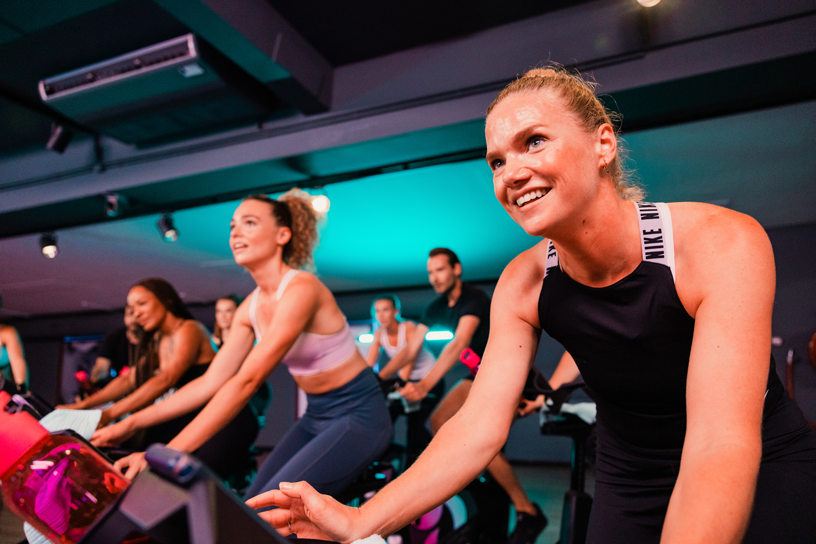
“The science is still evolving and exploding, but a meta-study published in 2023 reviewed research from the last 20 years and drew out four key conclusions. First, depression is almost always associated with reduced hippocampus volume. Second, exercise can help with depression – this the conclusion of 76 per cent of studies. Third, exercise is as effective or more effective than medication, with fewer negative side-effects and lots of positive side-effects.
“And fourth, BDNF is the likely linchpin for the effectiveness of both exercise and antidepressants, with neurogenesis very likely the mechanism and mediator.
“The sector has to be braver in the conversations it’s willing to have, encouraging people to keep an eye out for changes in how they feel”
“Daniel [Callow] is of course correct when he says we have to be careful about drawing early conclusions about BDNF. However, we already know that people with depression have low levels of BDNF in their blood, and that one-off sessions of exercise increase those levels. We also know that aerobic exercise is better than strength training at increasing levels of BDNF in the blood.
“I very much appreciate a scientist who’s cautious and focused on what’s absolutely proven, but I guess I’m just willing to be a little more generous in my views of the emerging molecular and cellular models of BDNF and neurogenesis, which are highly complex and compelling.”

We know what works. Why not talk about it?
Yet whatever we now discover as the science continues to evolve, as Callow himself says: “A precise mapping of BDNF levels in the brain isn’t what will elicit the greatest benefits for individuals. It might help develop therapeutics and drugs in the future, but what matters to the individual is the brain’s proven response to physical activity in terms of our behaviours, moods and cognitive responses.”
Patrick agrees: “If you’re on the field, you can’t deprive people by holding back waiting for a journal that empirically proves what we all suspect. You have to work with what’s available, and we know that being active is good for brain health – especially cardiovascular activity [find out more in our Life Cycle article]. We also know that brain health sits at the heart of mental health.”
“Gyms should move away from marketing physical perfection to focus on elevated mood, stress reduction and better sleep”
“And why wouldn’t we promote going to the gym to be happy?” asks Feller. “Not only does this encourage people to focus on the instant feelgood of being active, it’s also a more inclusive, supportive approach. It says you don’t have to look a certain way to attend the gym. It gives everyone permission to go purely for how it makes them feel.”
She adds: “I believe gyms should move away from marketing physical perfection to show people of all shapes and sizes, highlighting exercise benefits such as elevated mood, stress reduction, mental strength and better sleep.” (See also Focus on the Feelgood for more fascinating thought leadership on this topic.)
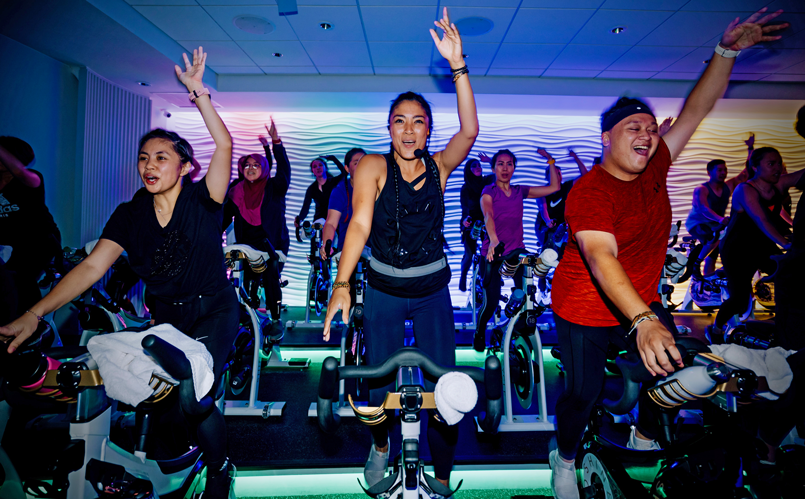
The brave new conversations gyms must have
But to support this new approach, says Patrick: “The sector has to be braver in the conversations it’s willing to have. Everyone’s scared of what they don’t know, but you don’t have to be a psychologist to ask someone how they feel, and to do so in a structured way.
“You can’t diagnose or promise specific results. You have to know when to stop giving advice. But you can ask the question, you can be empathetic, and you can say: ‘No matter what you’ve told me, I believe what we’re going to do will help.’ You can have a meaningful conversation and encourage people to keep an eye out for changes in how they feel.”
“Asking ‘How are you feeling?’ can be a throwaway comment, or it can be the basis for your whole brand”
He adds: “In the end, if exercise is done in a quest for improved body composition, very few people will adhere to it at the frequency that’s required. But if we can attach coming to class to improving the things that are bothering people mentally, we will drive loyalty.
“So we need to start selling ourselves as feeling centres, not physical transformation centres, with a clear scope of practice to communicate and improve the way people feel. There is no product that comes close to exercise, sleep and nutrition for achieving this goal; upscale gyms and studios already have the facilities, people and interventions to alleviate most people’s problems.
“If we can now improve our quality of language and diversify our understanding a little bit, we can be the wellbeing antidote to a poisonous environment. Asking ‘How are you feeling?’ can be a throwaway comment, or it can be the basis for your whole brand.”
The power of light
All photos ©Barbara Chancey Design Group
Lighting, when used correctly, has the power to create specific moods, trigger deep emotional responses, improve physical comfort and enhance mental wellbeing. Today’s fitness culture is tapping into this psychological dimension, combining illumination techniques to create flow and develop the right mood within each space and class.
“Brightness, colour and texture can mark pivotal moments in a workout; it’s hugely powerful when lighting and sound work in harmony”
When instructors need a high-energy vibe to get the party started, a dazzle of kinetic lighting surrounding sweaty bodies can be a euphoric experience. But when a song or its lyrics need to shine through for inward reflection, flashing colours become a distraction; calm, subdued lighting is more effective for contemplation.
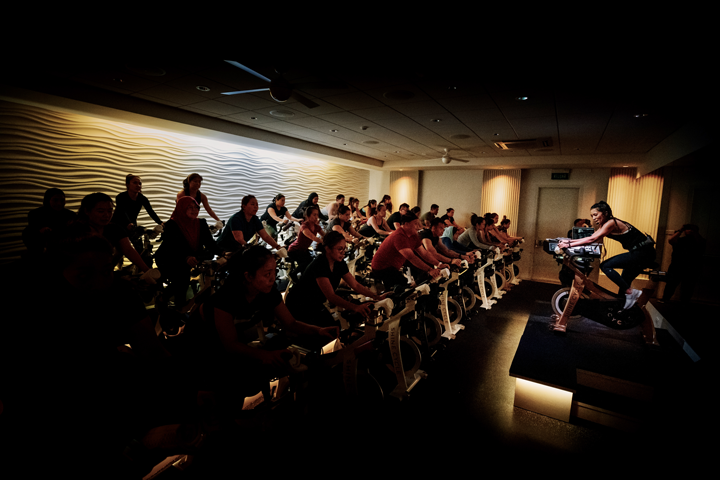
Like a musical performance, changes in brightness, colour and texture can also be used to mark pivotal moments in a workout, creating lasting memories; it’s hugely powerful when lighting and sound work in harmony during a class. Note, however, that there’s a thin line between entertainment and exercise. If lighting is used only to glorify the instructor, it becomes a superficial show and often defeats the purpose.
Brand-specific lighting
At Barbara Chancey Design, our approach to fitness lighting starts with understanding the brand’s core beliefs and determining how lighting can help elevate its messaging: while soft candlelight is effective for some fitness brands, others require immersive and glamorous nightclub vibes. We peel back the layers to discover what makes a workout experience deserve a place in the hearts of members.
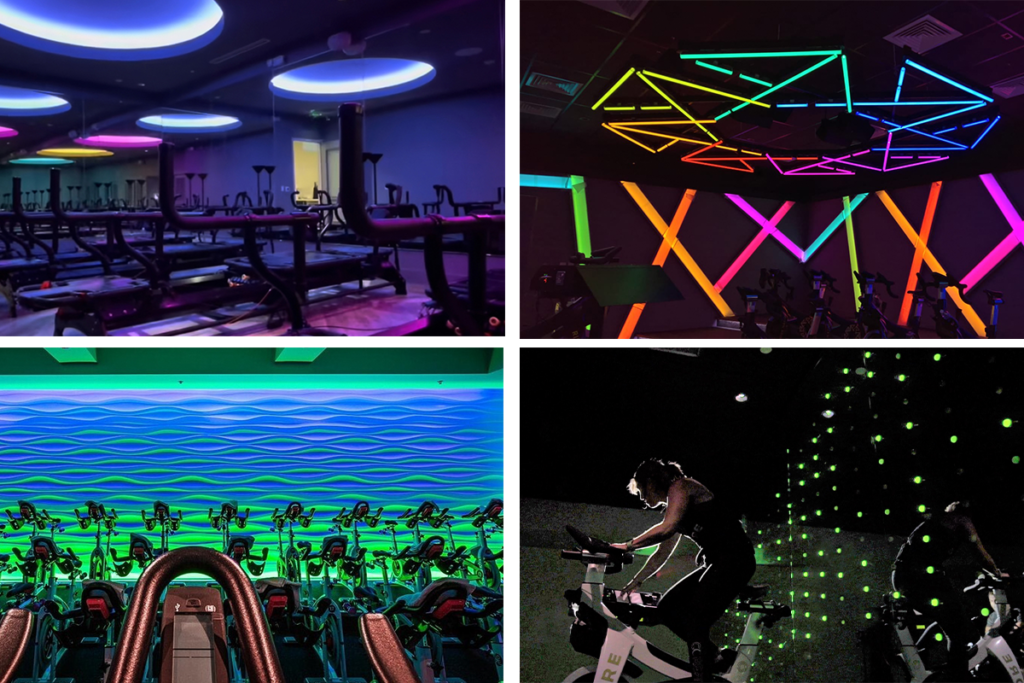
We also do a lot of behavioural thinking to design versatile, reliable, easy-to-operate systems that provide instructors with tools for unlimited creativity. It requires an enormous amount of thought during the design phase to create a hardwired system where instructors can unleash their creative talent at the push of a button, and where future needs have also been brainstormed upfront to maximise investment.

Our team includes British-born Daryl Vaughan, an international lighting designer who toured with legendary rock musicians including Genesis, Paul McCartney, Pink Floyd and the Rolling Stones. In the fitness sector, he now works exclusively for clients of Barbara Chancey Design.
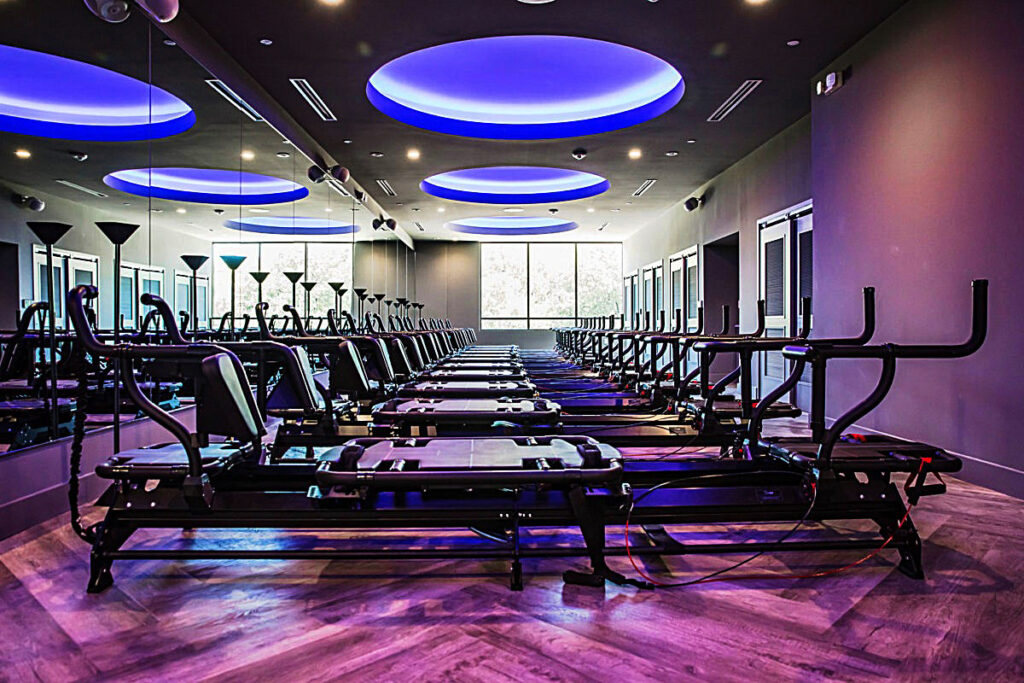
Vaughan explains: “When it comes to lighting, you obviously need to know the shape, form and dimensions of the area to be illuminated. You need to understand the class formats offered and the moods of each. Most importantly, you must study the client’s logo, brand guidelines, colour palettes and graphics.

“But what’s really crucial to understand is that lighting is not an afterthought: it’s designed into the overall floor plan. We work directly with the architect and audio provider to incorporate illumination into the construction drawings, fully integrating the lighting into the structure at the earliest stage and weaving it into the very fabric of the building.
“Careful selection of wall colours, surface textures, flooring and fixtures can maximise lighting effects: walls painted in dark hues absorb light and reduce reflection, for example, while walls in pale matte shades serve as canvases for painting with light.”
“Lighting is not an afterthought. We work with the architect and audio provider to incorporate illumination into the construction drawings.”
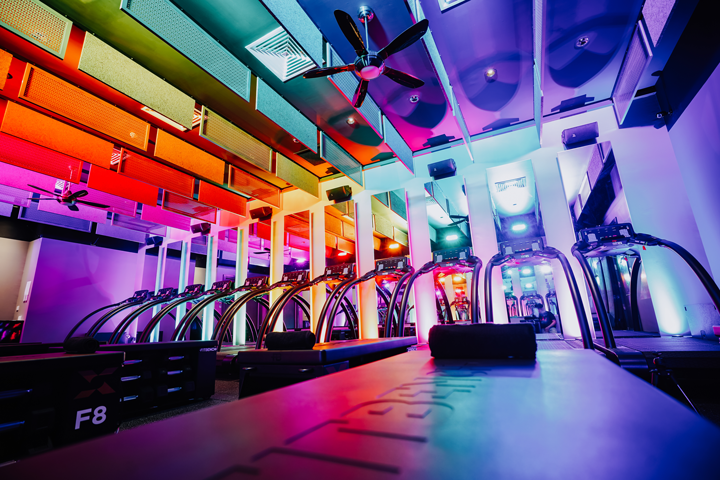
A science & an art
Light Partners’ Daryl Vaughan, Chancey’s go-to light specialist, outlines some of the technical considerations of feature lighting
#1
Creative illumination can be divided into two principal categories: reflected view and direct view. In the former, light from the fixtures is bounced off walls, floors and ceilings. When they’re exceptionally smooth, these surfaces effectively disappear, taking on a translucent, glowing appearance. To maximise the immersive effect, the light source should be artfully concealed. By contrast, direct view light sources are deliberately on display and part of the class experience, creating a sense of drama and energy.
#2
Modern LED light fixtures feature light-emitting diodes in the three primary colours: red, green and blue (RGB). By combining and varying the intensity of these three colours, almost any colour of visible light can be created. However, the white light created by combining 100% R, G and B can be cold and unflattering, so LED manufacturers are increasingly incorporating dedicated white (warm, neutral and cool) and amber LEDs – a much better colour palette for sensual, skin-flattering effects.
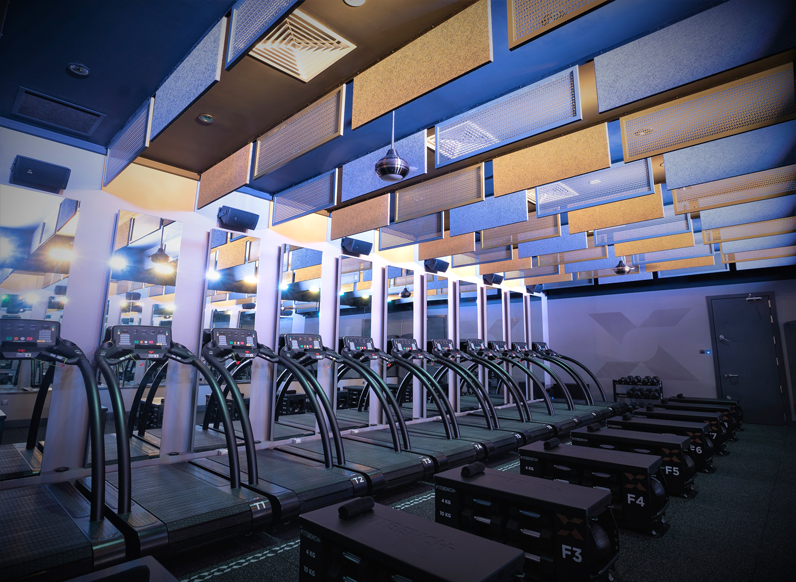
#3
Will you opt for plug-and-play or custom hardwired? The former describes a basic lighting system that can be installed rapidly and operated simply, but where a limited number of effects become predictable over time. A hardwired, custom-designed lighting system allows the true power of lighting to be unleashed. Tailored to suit a specific space, it’s designed as part of the build, with electrical drawings included in the architect’s set of plans.
#4
Ultra-violet (otherwise known as black lights) can be exciting, but don’t forget: materials in dental crowns and veneers will react differently under these lights, and unflattering images are nobody’s friend. If black lights are used, limit them to specific moments in a class. Strobe lights, multi-faceted projectors and laser effects should be used equally sparingly, if at all, as strobes can sometimes cause epileptic seizures.
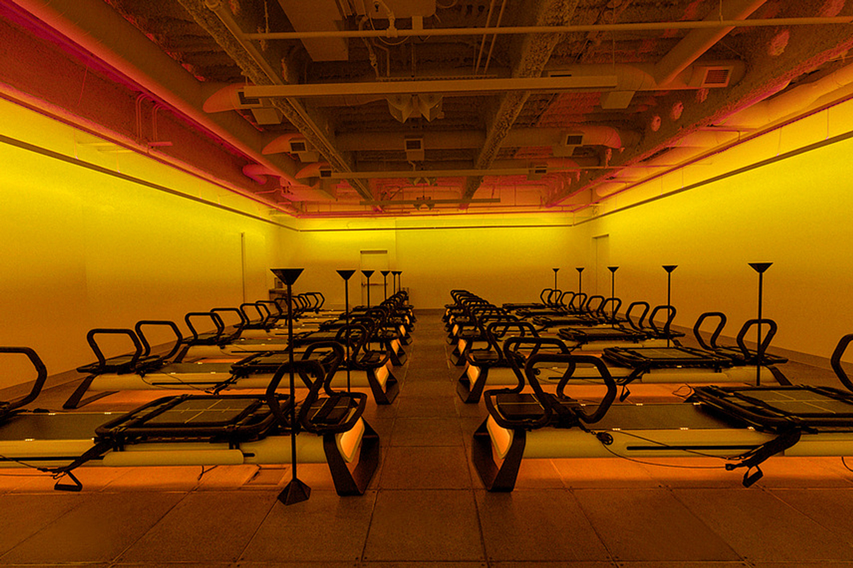
#5
Some set-ups use Bluetooth-connected apps to control lighting via an iPad, laptop or standalone DMX controller. We favour a solution where a simple push-button interface delivers instantaneous light changes without the instructor ever having to lose eye contact with the class. Limited only by imagination, light shows can range from slow colour cross-fades and gentle washes to fast-paced kinetic sequences, all carefully crafted to suit a particular mood or style of music.
